What is sustainable tourism and what is its aim?
As early as 1987 we saw the very first definition of sustainable tourism:
“[tourism] that meets the needs of the present without compromising the ability of future generations to meet their own needs.”
Brundtland Report. 1987 World Commission on Environment and Development.
Essentially, sustainable tourism aims to not only reduce our completely eradicate the negative impact of tourism, but to develop its positive impact on an environmental, social, and economic level.
Sustainable versus conventional tourism: what’s the difference?
Until that moment, tourism had focused solely on attracting more tourists and increasing revenues. Sadly, many factors were not taken into account, such as pressure on the environment, water and energy consumption, seasonality, pollution, gentrification, among others.
Disorderly and inefficient systems that took complete advantage of natural and human resources. Local populations would not intervene; touristic activities and initiatives were largely organized by foreign companies, meaning locals would rarely see appropriate remuneration for their efforts.
A destination’s human capacity was never considered. Destinations suffered due to their inability to meet the demand of tourism. Rising prices caused by inflation pushed original populations away from city centres to less centralized areas, while local population-tourist ratios spiked in favour of tourists.
It was not until the 1970s that some issues were eventually questioned, and concern spread to global levels. Already in 1975, the UNWTO held its first meeting in Madrid (Spain), amongst other objectives they laid down the following stance.
Tourism as an engine of economic growth, inclusive development, and environmental sustainability.
UNWTO
As of that moment sustainable tourism became a more widely adopted concept; to carry out touristic activities with the least negative impact on our environment.
Why is sustainable tourism important?
In 2019, tourism generated 1 in 4 new jobs around the world (10.6% of all jobs). With a contribution to the world GDP of a staggering 10.4%.
These figures let us know how important the tourism industry is and why we must take care of it. As an industry, we have a responsibility to lead the way. We will provide a much more complete, healthy, and quality experience to our customers. In turn, this benefit will have an impact on company profits.
What are the benefits of sustainable tourism?
The benefits of sustainable tourism are innumerable, not only for helping the industry continue to grow but also for the impact it has on many different fields.
Economic benefits:
Job creation. Income generation in the local economy. Improved infrastructure, quality of life, and poverty reduction.
Environmental Benefits:
Conserving biodiversity and natural resources, favoring balanced development. A healthy environment contributes to more competitive tourism.
Social Benefits:
Favoring the integration of local populations. Active participation between local people and visitors. This creates stronger ties with local communities and improves local satisfaction with tourism.
“Sustainability must stop being a niche in tourism and become the new norm for every part of our sector”
Zurab Pololikashvili, UNWTO Secretary-General
Why is sustainable tourism difficult?
Sustainable tourism requires effort. A commitment from each organization and its management to establish strategies with long-term results.
We do not always have the necessary tools to quantify where and how we are having a negative impact. Organizations such as the UNWTO can help us make decisions, and conscious measurement and benchmarking will help us to create improvements.
What are the main types of sustainable tourism? (With Examples)
The diversity of the offer today is wide and evolving:
Ecotourism
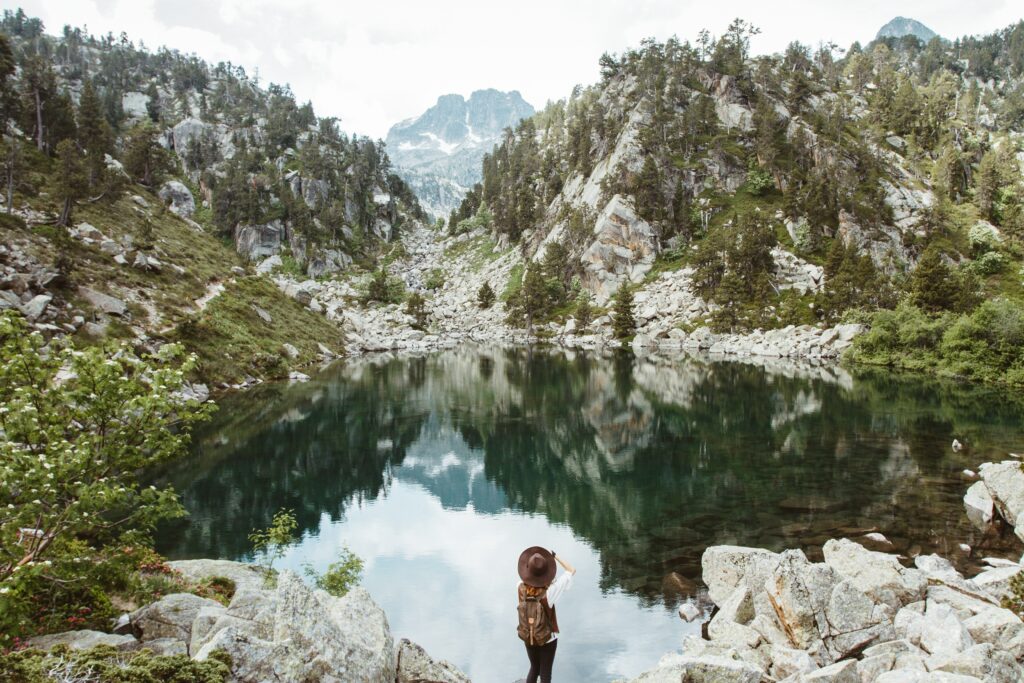
Tourist activities without altering the natural areas where it takes place. The purpose of ecotourism is to enjoy, appreciate and study natural attractions.
The perfect example is walking through The Natural Park of Aigüestortes (Lleida, Spain) guided by a local expert and appreciating its diversity. This is a great example of minimal impact on the environment.
Green Tourism

Green tourism promotes destinations and activities that are not overcrowded. Rural initiatives that respects the environment, and propose healthy activities.
Take a look at the green and sustainable Hotel Torre del Marqués (Matarraña, Teruel, Spain). It has facilities designed for a more optimal use of resources. It uses renewable energies and techniques, as well as construction materials that help thermal insulation.
Cultural Tourism

Cultural tourism is inspired by the appreciation of culture in any of its manifestations.
At Alandis Travel we place great importance on exposure to tangible and intangible heritage. A great example of this is how we integrate UNESCO World Heritage Sites into our programs.
Responsible Tourism
Responsible tourism tries to reduce the negative impact of tourism in general, whether in the economic, social, cultural, or ecosystem sense.
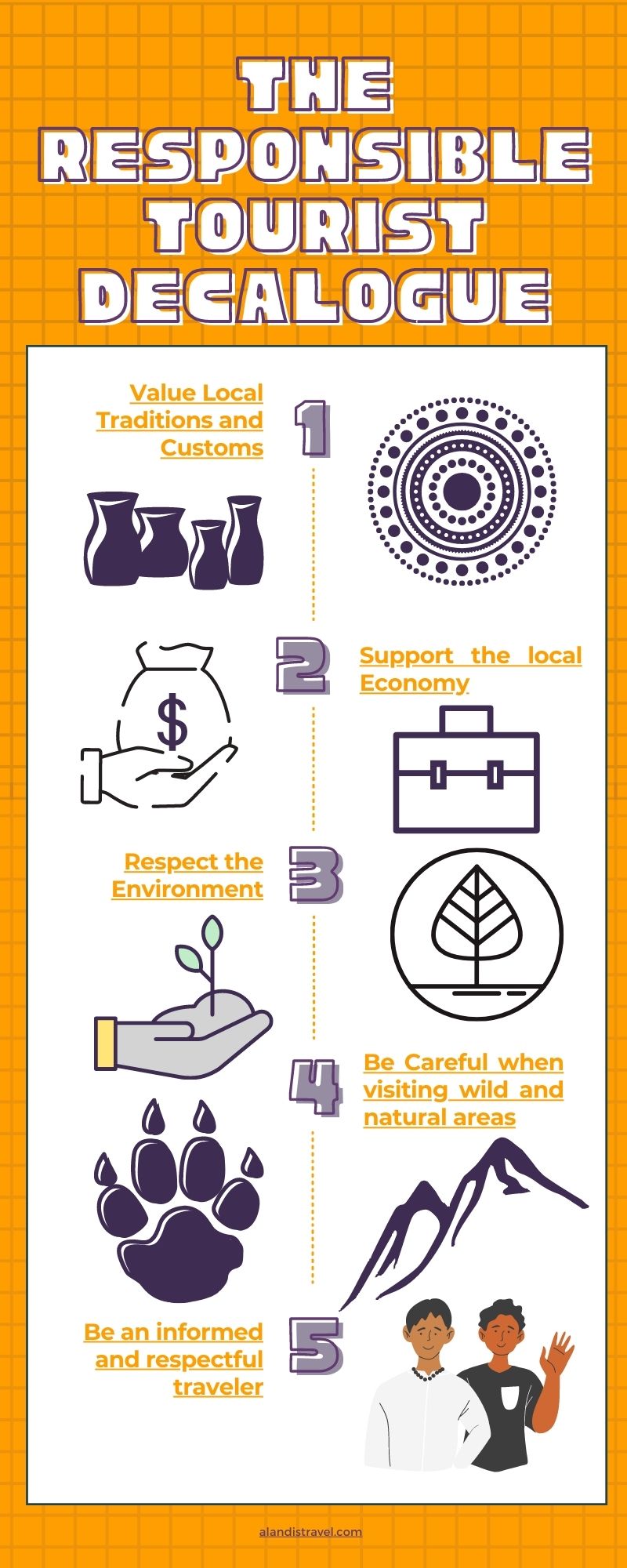
Solidarity Tourism
Solidarity tourism aims to deeply understand, appreciate, and empathize with the destination we visit. A key component is collaborating somehow to promote development of the area.
At Alandis Travel we too understand the importance of this; on many of our Cuba programs we collaborate with local social projects such as Akokan, located in a marginalized neighborhood of Havana. Among its objectives is the dissemination of traditions related to the Afro-Cuban religion.
Our travelers are grateful to escape from tourist clichés and to get to experience a deeper cultural immersion. They help by disseminating their own intangible heritage and contributing financially to the local economy.
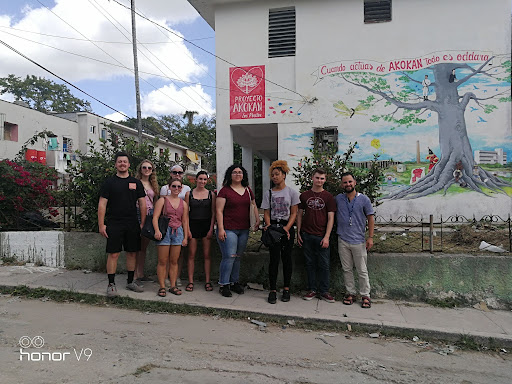
Geotourism
Geotourism promotes activities based on learning the geographic value of a destination. A magnificent example of a geosite is the Cuenca Minera de Riotinto (Spain). It has unique conditions that have made it worthy of study by NASA itself.
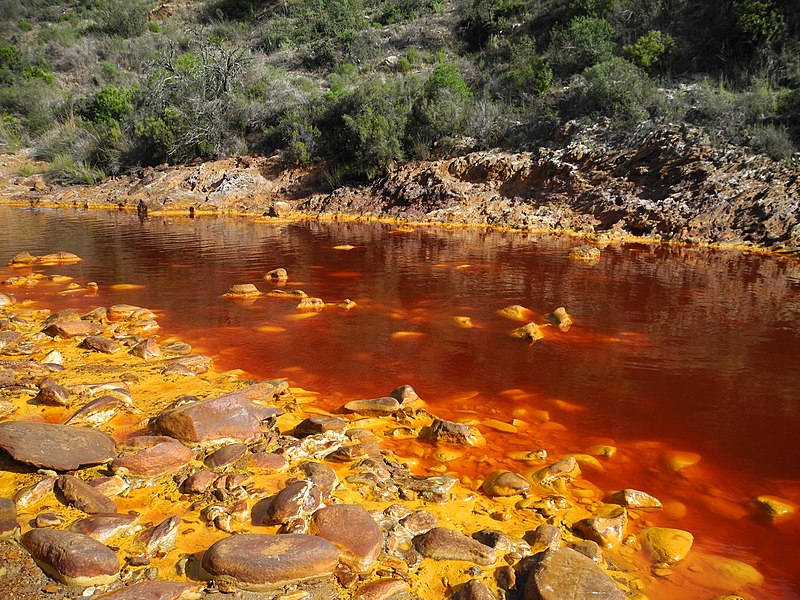
Soft Tourism
Soft tourism refers to a low impact tourism that hardly alters autochthonous (indigenous) elements, while respecting the environment.
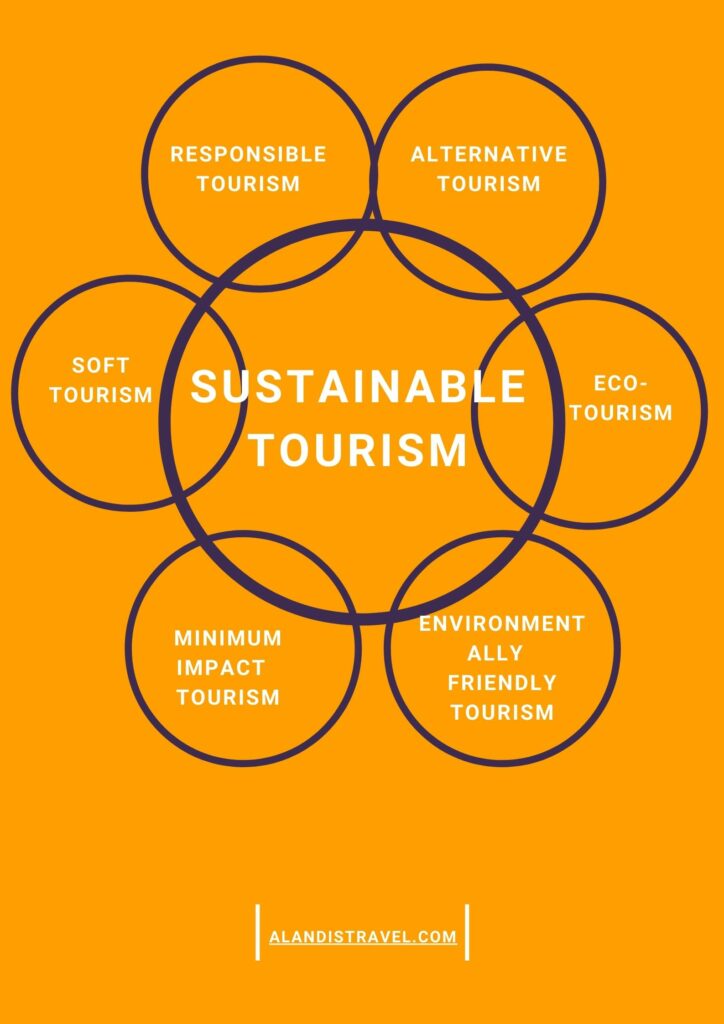
Rural Tourism
Rural tourism is developed in agricultural areas. Tourists can interact with the community by sharing traditions and customs (both ways!).
A clear example would be horseback riding through tobacco plantations in rural Cuba. Here, the practice of sustainable tourism is very diverse; a direct contact with nature despite very little impact. The client gets to have a more authentic experience, away from conglomerate areas. The local culture and economy receive wider recognition through the tobacco industry, while tourist pressure is significantly reduced.
As a result it helps the economy, labor retention, and the preservation of the environment.
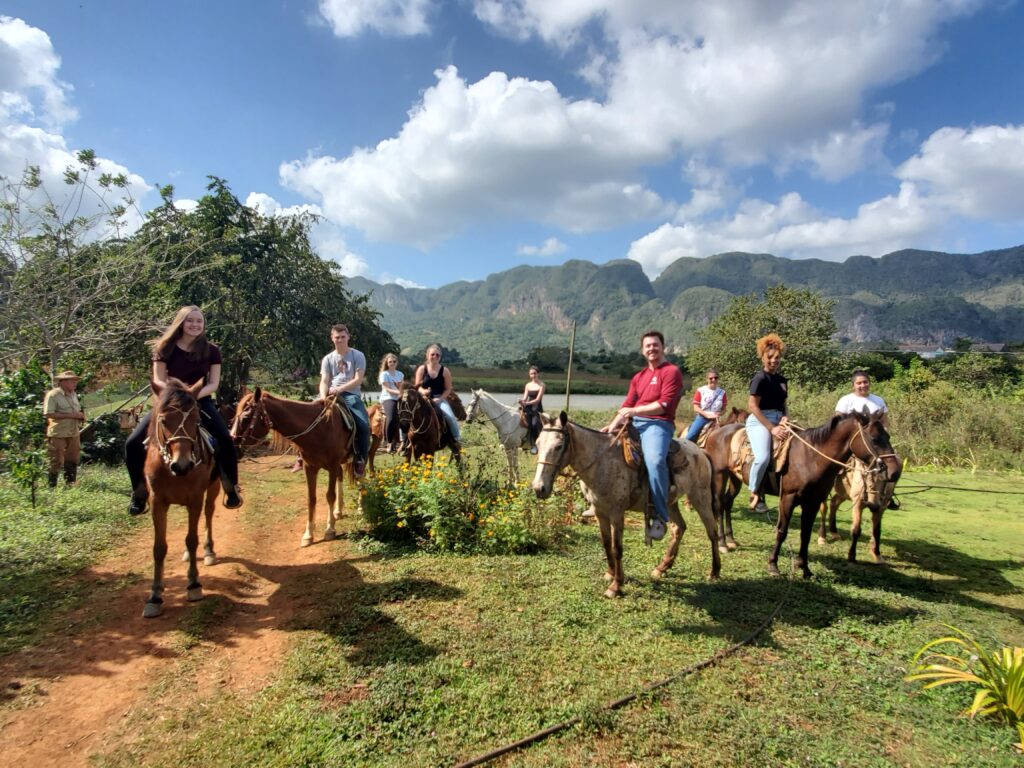
Agrotourism
Another modality of rural tourism, is agrotourism. Agrotourism takes place in agricultural areas and is complemented by further activities based on local agricultural practices and livestock handling. It’s a wonderfully direct contact with these traditions and ways of life.
This is the case of visits to Cabrales (Asturias, Spain), where tourists can learn about the production of local Cabrales cheese.
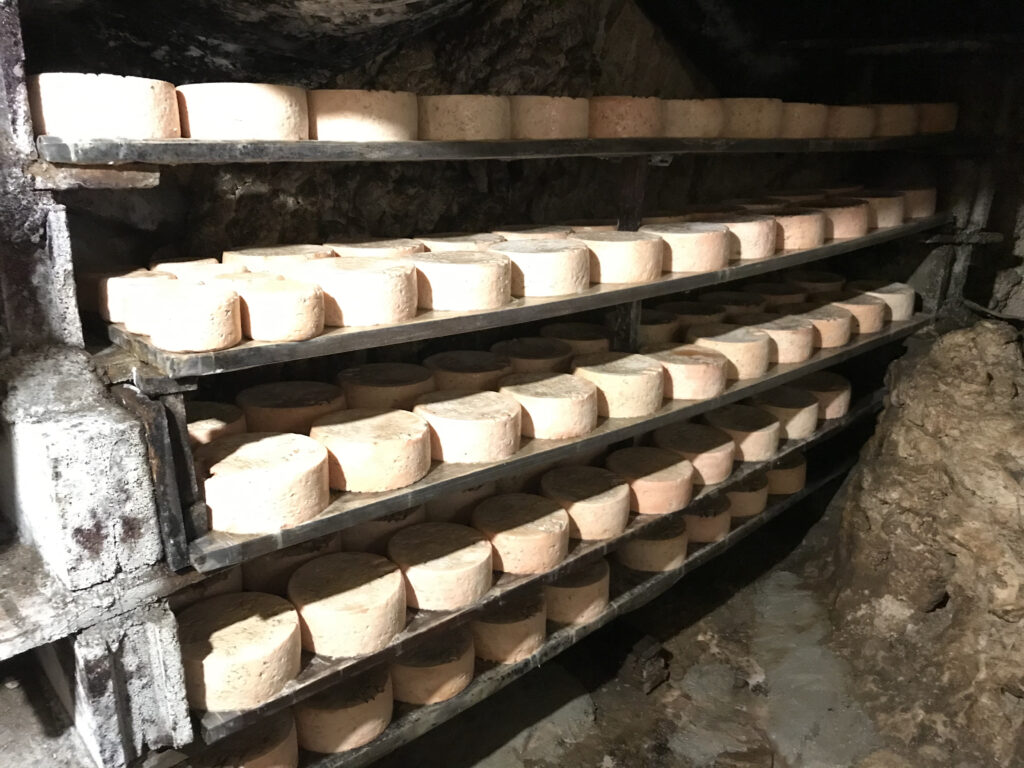
Community-based Tourism
Community-based tourism is a more human form of tourism. Everyone involved in the development and management is from/native to the local population. This results in a large part of the economic benefits being received directly by the local population.
On Alandis Travel’s Cuban tours we encourage the choice of “casas particulares” as our travelers’ lodging on the island. It’s a “Cuban Airbnb” housed in authentic architectural masterpieces where travelers don’t want for any comforts.
This facilitates the participation of the local population who are hosts in their own homes. The client benefits from having a more real experience, despite maintaining their independence and privacy.
What are the 3 main principles of sustainable tourism?
Economic efficiency
Sustainable tourism needs to generate wealth. It grows thanks to both domestic and international revenues, and creates jobs directly and indirectly.
Social equity
The impact of tourism on society is considered more long-term. For this reason, social equity is often, sadly, the most neglected pillar.
The well-being of local communities must be a priority. We must launch initiatives that include the local population in the activity and preserve their cultural heritage.
Environmental conservation
Environmental resources are one of the fundamental tools of tourism; the raw material for many of its products and services.
We must respect and safeguard ecosystems. Avoiding the destruction or deterioration of natural resources while weighing up carefully the responsible consumption of resources and land.
How can we promote sustainable tourism?
Implementing sustainable practices in our institutions is possible!
Start measuring the negative impact of your organization. It’s time to ask yourself questions like:
- Do we offer quality and sustainable tourism?
- Do we integrate the people of the communities or destinations?
- Can we measure and correct negative impacts?
Based on these answers you can begin to define the strategy for your company. Carrying it out will be a long-term journey that although may not yield as much in the short-term, will nonetheless turn into profitable ventures.
Sustainable tourism best practices that may help your organization
Collaborate with tourism companies and local solidarity initiatives
Study your destination. You are sure to find companies that use KM0 or proximity products. Work with NGOs that promote the integration of the population, and hire personnel who are at risk of social exclusion.
These institutions and initiatives can inform you of the process. If you do so, this will inevitably become a marketing tool that you can show on your website and share with your customer.
Ensure that the economic benefit reaches the local population
Hiring local labor is as essential as it is effective. This needs to be a top-down decision in your organization, but the benefits for the local community, your customers, and ultimately your business .
Buy local products
From among your suppliers, choose those that are local: soaps, textiles, gastronomy. Not only do you contribute to the local economy, but you also add value to your customer’s experience.
Follow best practices to avoid food waste
Plan your menus well, and consider your purchasing, reception, and storage and their impact. Reuse leftovers while guaranteeing hygienic-sanitary safety.
Rank and promote healthy activities
Promote quality activities that spread knowledge of the area. We have been really impressed by Mdumbi, aimed at backpackers on the Wild Coast of South Africa. They support local community involvement and eco-tourism.
Continuous training and learning
Kickstart every employee in your business by providing them with training and relevant information to help them do the best job possible. Display informational signs and reminders at your local facilities and international offices. Use several languages to reach as many people as possible.
Promote female empowerment with qualified and secure employment
Seek alliances and support with associations or federations. The Association of Tourism Business Executives integrates, supports, and advises on how to achieve the sustainable development of female empowerment.
Engage technological innovation to improve productivity and accessibility
MUS.NET (Museum Network) improves user experiences by using mobile applications and audience segmentation at museums in rural areas.
Consider other applications that provide virtual visits for people with disabilities, and investigate augmented reality applications to optimize the experience for children.
Ensure both online and offline accessibility
Design a product or service for everyone with no barriers to entry and reaches a far wider audience.
Analyze the environmental impact of your organization
Quantify the damage your organization does to then reduce or completely remove it.
The Hilton hotel chain has added a LightStay monitoring and management system. At an event, they can measure the environmental footprint based on attendees. They study the meals served according to proximity products, as well as the number of rooms booked, space used, the duration of the event and the energy-saving measures implemented on site.
They collaborate with a social project to balance their total footprint.
Rainwater harvesting, safe reuse of water resources
Implement rational use of water and channel rainwater for later use. A local solution we have seen implemented is the treatment of wastewater and subsequent filtering for your crops.
Offer activities and products that support cultural and natural heritage
Spread the word of cultural promotion and use of local products. Design activities that disseminate local knowledge and traditions. Promote them.
Integrate social and environmental activities in your programs. The Creative Tourism Network is well aware of this. They are an umbrella organization for travel companies engaged in creative activities which allow the tourist to discover and appreciate the local culture. They share artistic and participative activities with the residents.
Inform and raise awareness to increase awareness and respect
We never tire of repeating it. Disseminate, raise awareness, educate. Caring for our environment is everybody’s responsibility and a task for stakeholders at all levels of a business.
COVID-19, New Opportunities?
The reality is that the world of tourism was due a reorganization due to unsustainable practices. New trends have increased domestic travel, leading to a reduction in the number of flights and cruises.
We are seeing more interest in rural accommodation and a greater variety in destinations closer to home. Waste and water consumption have been reduced. Will this trend be sustained over time? Is it time to increase sustainable supply?
We hope it’s time to seize the opportunity and rework tourism as a more resilient and sustainable industry.
Summary
We must begin to put in place new forms of tourism; a new model more adapted to the environment. One which guarantees the conservation of the landscape and offers more individuality.
New sustainable practices are more in demand by customers than ever.
In sustainable tourism, we all win.


